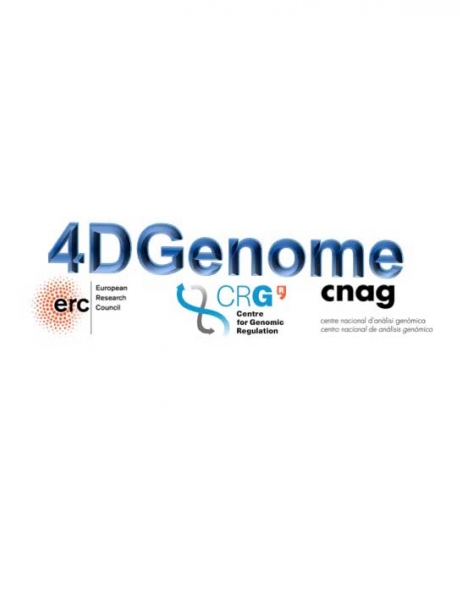
The classical view of genomes as linear sequences has been replaced by a vision of nuclear organization that is both dynamic and complex, with chromosomes and genes non-randomly positioned in the nucleus. Process compartmentalization and spatial location of genes modulate the transcriptional output of the genomes. However, how the interplay between genome structure and gene regulation is established and maintained is still unclear.
The aim of this project is to explore whether the genome 3D structure acts as an information source for modulating transcription in response to external stimuli. With a genuine interdisciplinary team effort, we will study the conformation of the genome at various integrated levels, from the nucleosome fiber to the distribution of chromosomes territories in the nuclear space. We will generate high-resolution 3D models of the spatial organization of the genomes of distinct eukaryotic cell types in interphase to identify differences in the chromatin landscape. We will follow the time course of structural changes in response to cues that affect gene expression either permanently or transiently. We will analyze the changes in genome structure during the stable trans-differentiation of immortalized B cells to macrophages and during the transient hormonal responses of differentiated cells. We plan to establish novel functional strategies, based on targeted and high-throughput reporter assays, to assess the relevance of the spatial environment on gene regulation. Using sophisticated modeling and computational approaches, we will combine high-resolution data from chromosome interactions, super-resolution images and omics information. Our long-term plan is to implement a 3D browser for the comprehensive mapping of chromatin properties and genomic features, to better understand how external signals are integrated at the genomic, epigenetic and structural level to orchestrate changes in gene expression that are cell specific and dynamic.










